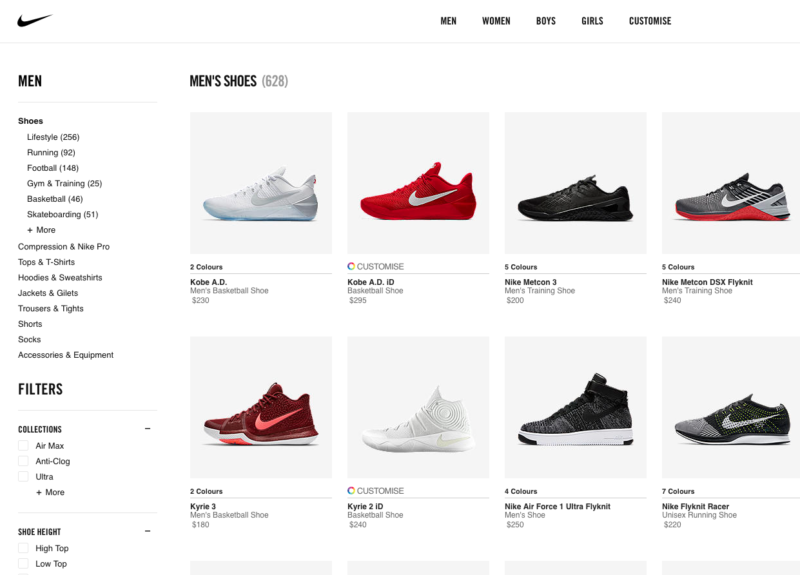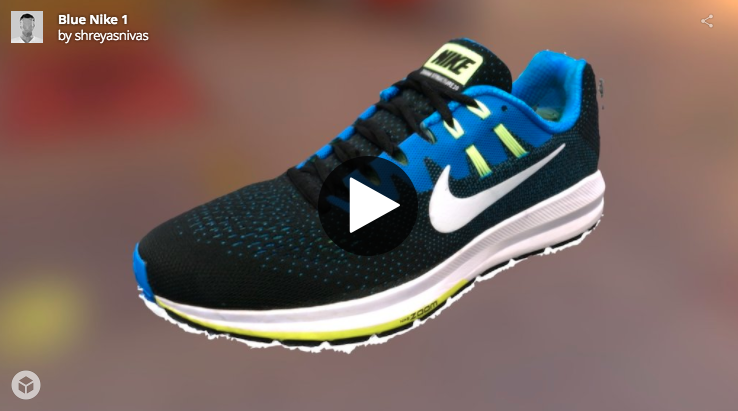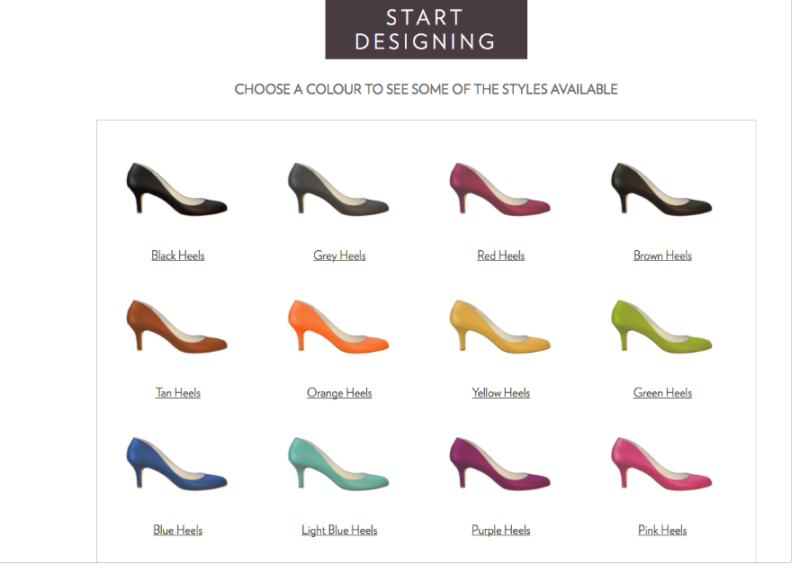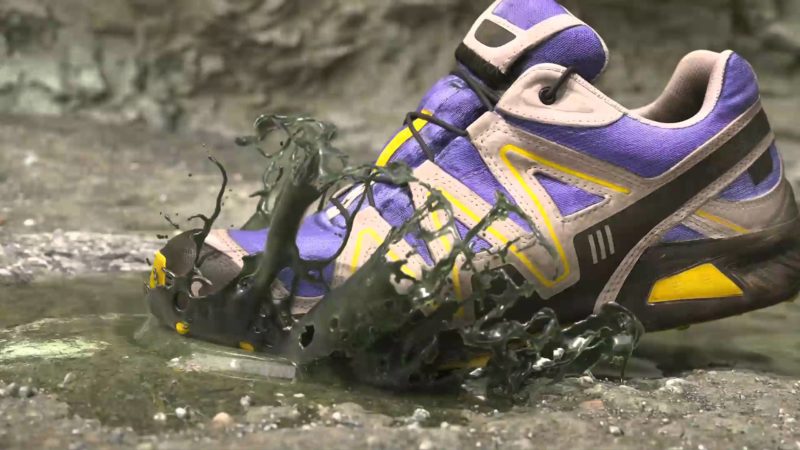How 3D is changing the online shopping experience
Before you think 'not another unrealistic tech piece' - marketers take note: customisable shoes are just the beginning of the evolving physical shopping experience. Shreyas Nivas explains more in this guest post.
It has taken about a decade for the late adopters to truly come to terms with the standard e-commerce website templates and layouts, which display a list of images that describe the products the online retailer is trying to sell.
Everybody now understands how an online shopping cart experience works – you visit a website that has about 20 products per page, click on one you like, add it to your cart, charge your credit card, and viola! the new product rocks up at your door several days later, in some cases, the very next day. What a world we live in!
We can look back on this as an obvious outcome given the trends in the tech world but it truly has taken tens of thousands of people spending millions of hours to produce this cumulative effect that we now take for granted.
As everything else in the tech world, this is ever changing.
The standard 2D product images on ecommerce websites are not useful enough anymore, as customers increasingly want to understand more about the product, interact with it, and truly connect with it before they are compelled enough to commit to purchase.
In technology and also in retail, the customer’s demands eventually shape the product, and with AR and VR coming into the limelight we are poised to see a new trend take over the common online shopping experience.
So what does the future of e-commerce look like?
Think about the last time you bought a pair of new shoes – whether purchased online or not. What is the most common way of making sure you want to spend those couple of hundred bucks on that particular model? How do you convince yourself to commit to it?
Do you, like every single other person on the planet, pick up one of the shoes, rotate it, examine it from every angle before that familiar reach-for-wallet feeling crept into your mind?
And if you bought this online, did you or did you not spend a few minutes swiping through all of the product detail images multiple times, wishing that you could reproduce the physical interaction of holding it up and examining it from every angle?
3D products on websites
The future is being able to reproduce that common physical shopping experience of looking at a product from every different angle, in the online world.
It’s so obvious, everybody wants to do this. And the good news is that it’s actually possible with the tools we have today.
A few pioneering companies have already jumped on this concept and moulded it into their brand and customer experience.
The Aussie start-up Shoes of Prey is one such pioneer, providing customer with the ability to not only view its shoes in 360 degrees, but also to customise the shoes and therefore purchase unique fashion products, a personal touch that has resulted in customers writing rave reviews and refer friends to the popular online retailer.
When interviewed by Techradar, Jodie Fox, co-founder of Shoes of Prey, says 3D technology used for the online shoe design tool allows the customer to visualise their creation in the most realistic way possible, before they commit to ordering.
“Shoppers are becoming more sustainably minded and as a result, I think we’re going to see 3D technology become more mainstream in the e-commerce industry for consumers, designers and manufacturers,” Fox says.
But it doesn’t stop there…
For one, having a 3D product catalogue does not simply mean embedding 3D product views onto websites to replace their 2D obsolete counterparts.
The simple fact is that once a product can be scanned, or somehow built into a realistic enough 3D model, it opens up a huge number of side avenues that businesses can take advantage of to promote their brand, save time and cost, and reach new audiences across new mediums.
Although AR and VR are still nascent in the sense that nobody is currently buying shoes from their VR headsets, at some point this too will become a reality, simply because the experience presented by High Quality VR just cannot be ignored.
When that happens, brands will already have migrated most of their product inventory into 3D, and implementing this branded content across the new VR medium will be a no brainer.
AR presents its own unique use cases, especially by providing avenues to help shoppers while actually in store. Imagine a busy Saturday afternoon at your local Nike store, there are 50 busy shoppers and only 5 staff in attendance.
You have a scenario where there is simply not enough time for the staff to provide enough of a personalised shopping experience for each shopper by helping them understand the unique characteristics of one product over another, and develop that personal connection that is so crucial when it comes down to winning a sale.
The end result is that shoppers have to figure things out for themselves, which they do by flipping out their smartphones and going online, and try to replace the personal shopping attendant with Google.
Imagine how technologies like AR and image recognition can transform the ‘offline’ shopping experience: the shopper flips out their phone, opens up the Nike app and points their smartphone camera at a product. This brings up the product description for that shoe, with annotations explaining the special thread woven fabric that provides comfort while not sacrificing breathability, or how the soles have an extra comfort finish so that the running experience is enhanced. It also provides options to compare selected models for better customer experience while shoppers can pick products off the shelf and immerse themselves in the purchasing experience.
There are plenty of other smart and sometimes gimmicky ways that brands can and will use VR and AR to engage with their community and build new audiences, and the use cases highlighted here are just pointing in the right direction.
These are the kind of experiences you will see in retail in the coming few years.
With highly photorealistic techniques such as active and passive scanning, 3D photogrammetry and highly-skilled CAD, CGI and VFX designers, it won’t be long until every global brand has a dedicated team to work on 3D categorisation of their brand’s inventory, followed by a digital brand engagement strategy around the efficient usage of those 3D assets across all forms of media.
And that’s not all.
Think about traditional media such as print ads, billboards, posters, short animations, TV and video ads, and every other aspect of a brand’s online digital visual presence.
Traditionally, marketing and digital departments within global brands are content to spend huge amounts of money and time on professional photoshoots – the end result is a great looking poster or advert, but the problem is that this process is not efficient.
Instead, if a brand were to create a highly photorealistic 3D model of their products, it becomes a simple task of rendering that 3D asset in a scene which can then be exported into a still image or an animation clip.
This is something most digital designers and graphic artists are familiar with, and this process drastically cuts down on the time and labour cost of setting up a photoshoot, and then going through the motions of rendering that into several forms of consumer media.
What this means is that you can have an end result that looks like so.
That image, which would have otherwise cost several hundred dollars in labour and logistics to do as a photoshoot, was done in 20 minutes by a graphic artist using standard environments and liquid visual effects, and a photorealistic 3D render of that shoe. Boom.
3D disrupts traditional media
The media industry is ripe for disruption, and it’s up to brands to embrace this concept as they begin to understand more about their customer’s unique pain points during the sale process across the brand’s various touch-points.
A few start-up companies such as M3DIA have stepped up to the plate, offering solutions that help brands take advantage of these amazing tools that smoothen out the sales conversion process across both online and offline sales channels, or as it’s now called, omni-channel sales.
M3DIA offers unique services to help scan brands’ inventory and embed these 3D assets into websites, build bespoke AR and VR app experiences, and help Brands craft amazing experiences for their customers across both online and offline channels with a focus on Digital Media.
Customer experience remains at the crux of the problem – The more beautifully crafted experiences brands can create for their customers, the more likely they are to remain competitive in new Mediums such as Augmented and Virtual Reality.
The future of ecommerce is exciting, and we are all in for an amazing ride!
Shreyas Nivas is the CEO of M3DIA, a start-up offering brands 3D product scanning and retail technology solutions
This article appeared originally on LinkedIn and is republished with permission.








Now if only I could send them my 3-D foot to make sure their 3-D shoe fits …
User ID not verified.
Actually, it’s possible to point your smartphone or tablet at your foot and see a virtual show fit and with the correct size.
This particular piece of tech is a bit further away than the other ideas in the post, but it’s on our roadmap!
User ID not verified.
Did you know that people who have vision in only one eye cannot see 3D presentations?
User ID not verified.
Try covering one eye and rotate the 3D image in this link. You may want to reconsider your statement above:
https://www.artec3d.com/3d-models/classic-chair
User ID not verified.